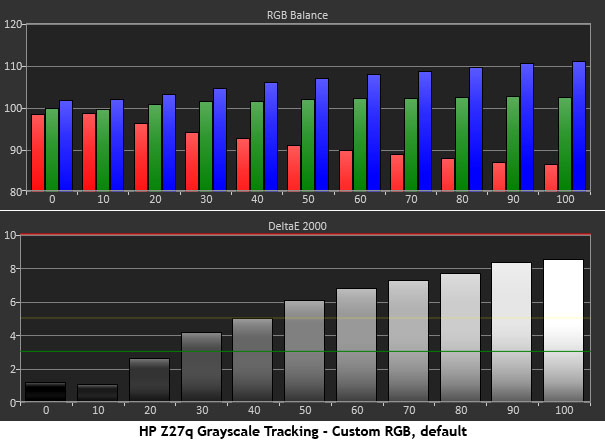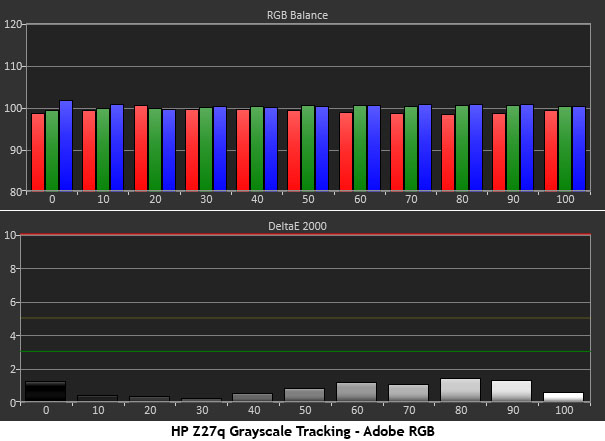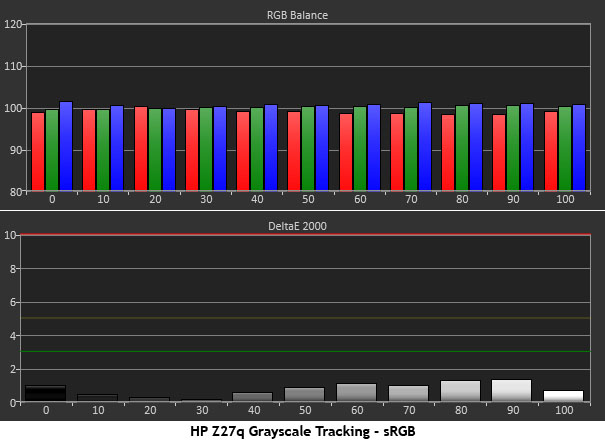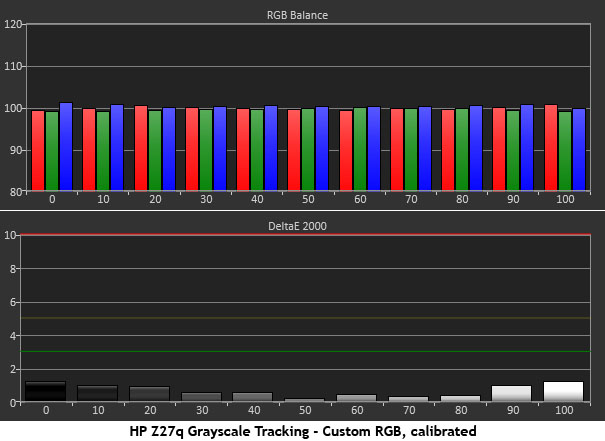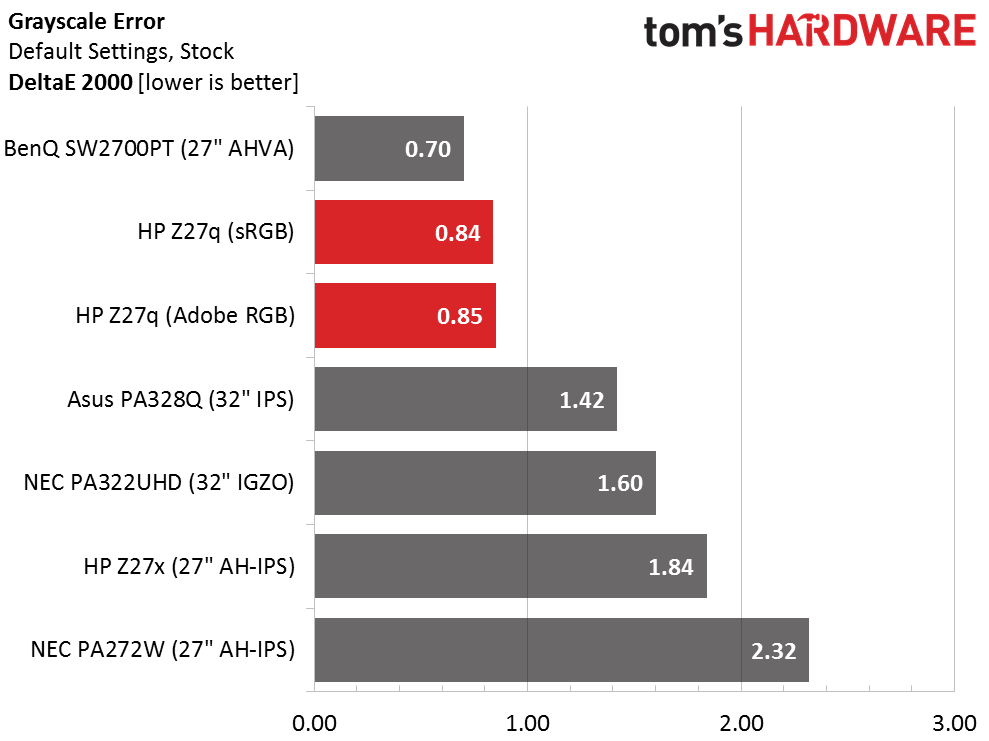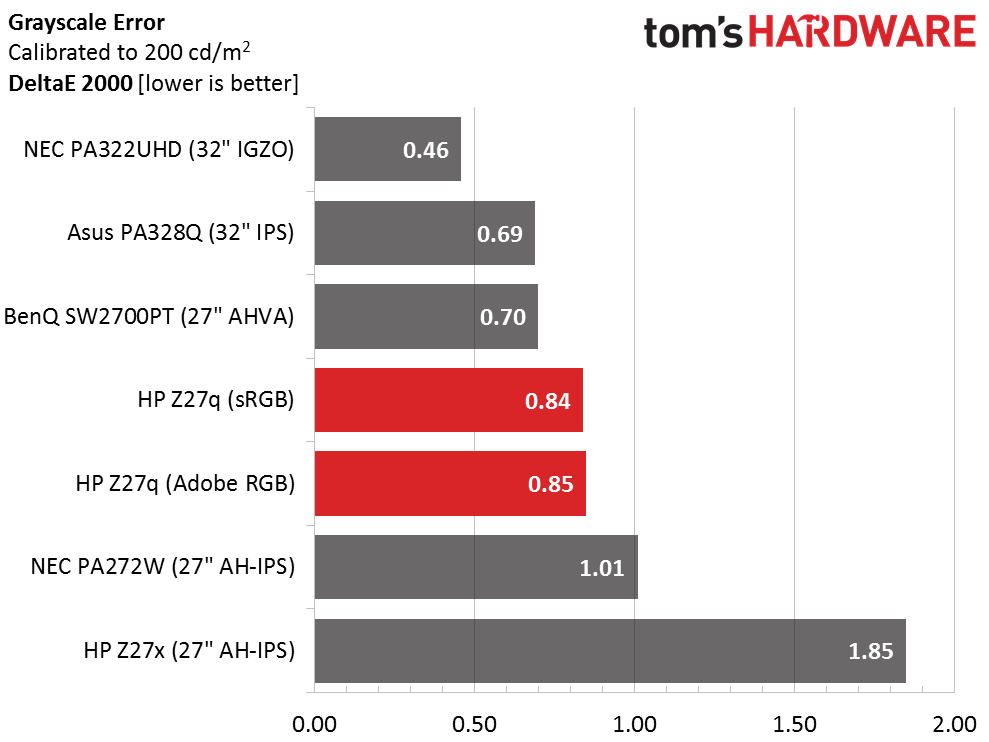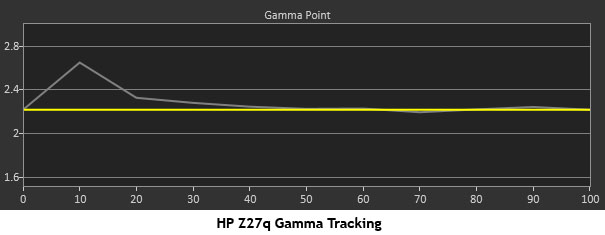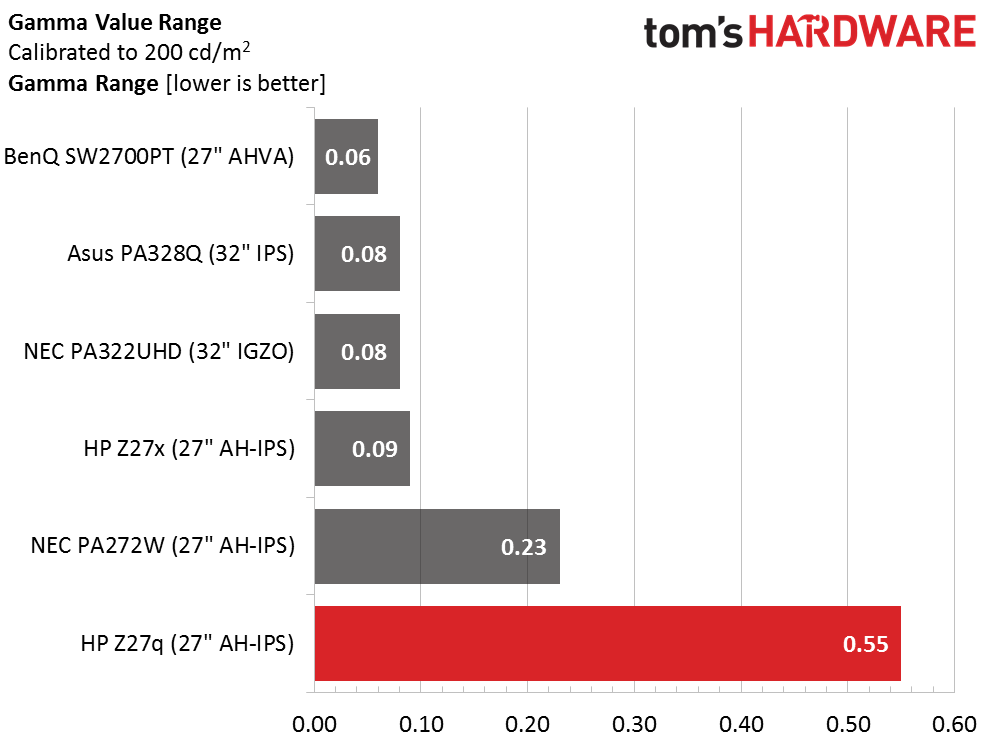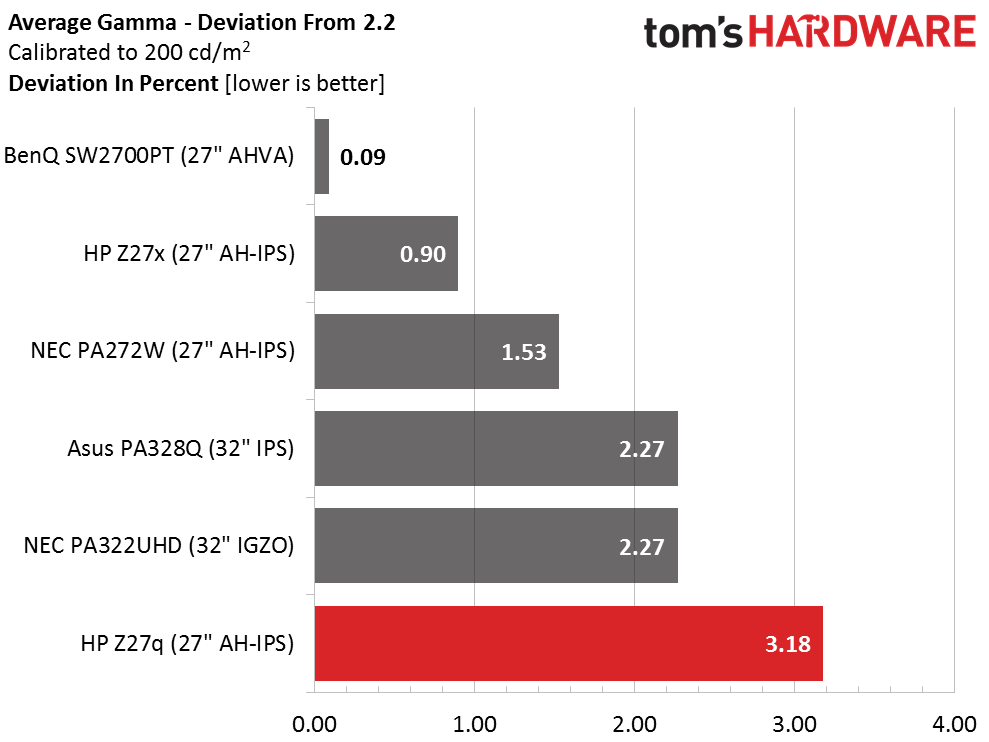HP Z27q 27-inch 5K Professional Monitor Review
Just as we're getting acquainted with Ultra HD, HP has upped the ante with a 5K monitor. At 5120x2880 the Z27q puts a whole lotta pixels on the screen, 14,745,600 in fact. Today we check it out in our lab.
Why you can trust Tom's Hardware
Grayscale Tracking And Gamma Response
Our grayscale and gamma tests are described in detail here.
For a factory-certified monitor, the Z27q's default mode is surprisingly inaccurate. Custom RGB is the only mode that allows grayscale adjustments so it is possible to calibrate the color temperature to a proper D65, or any other value you may wish to try. The RGB sliders have 256 steps, which means you can specify a large variety of white points with precision.
In the fixed Adobe RGB mode, grayscale tracking is essentially perfect. Errors are all below two Delta E, which means they're invisible to the naked eye. Even though you can't perform a calibration in this mode, the brightness control is still available.
You can expect the same excellent performance in the sRGB preset. There are no problems to report here and you have the same access to the brightness slider.
Calibrating the Custom RGB mode yields another ideal chart. There are no errors to speak of here, however we did encounter some color gamut issues in this mode. Before deciding on the best picture mode, we recommend you check out our color test results on the next page.
Here is our comparison group.
In the factory-certified Adobe RGB and sRGB modes, the Z27q exhibits the grayscale performance expected from a premium professional product. Since there are no calibration options here we're repeating the same numbers for both the pre- and post-calibration comparisons.
Get Tom's Hardware's best news and in-depth reviews, straight to your inbox.
With the exception of the Z27x, the other monitors here can be calibrated to slightly higher standards than their factory states. The PA322UHD shows the greatest improvement although any of these screens are perfectly usable without adjustment.
Gamma Response
We measured the gamma in every picture mode and got the same result each time. Tracking is perfect except for a hump at the 10 percent level, which means that the brightness point is a little too dark. It doesn't affect image quality significantly but it might result in a loss of fine shadow detail.
Here is our comparison group again.
The Z27q's last-place finish is solely due to its error at the 10 percent brightness level. If not for that, it probably would have risen to the top spot.
We calculate gamma deviation by simply expressing the difference from 2.2 as a percentage.
That single error is also responsible for its average gamma value of 2.27. All other luminance points are within a hair of 2.2. This error does not affect the color saturation results, which we'll show you on the following page.
Current page: Grayscale Tracking And Gamma Response
Prev Page Brightness And Contrast Next Page Color Gamut And Performance
Christian Eberle is a Contributing Editor for Tom's Hardware US. He's a veteran reviewer of A/V equipment, specializing in monitors. Christian began his obsession with tech when he built his first PC in 1991, a 286 running DOS 3.0 at a blazing 12MHz. In 2006, he undertook training from the Imaging Science Foundation in video calibration and testing and thus started a passion for precise imaging that persists to this day. He is also a professional musician with a degree from the New England Conservatory as a classical bassoonist which he used to good effect as a performer with the West Point Army Band from 1987 to 2013. He enjoys watching movies and listening to high-end audio in his custom-built home theater and can be seen riding trails near his home on a race-ready ICE VTX recumbent trike. Christian enjoys the endless summer in Florida where he lives with his wife and Chihuahua and plays with orchestras around the state.
-
Xajel So, how long till we will see a 21:9 version of these... the 21:9 version will be good, as it will you give you the 21:9 ratio and still be able to view a full 4K resolution in the same time, as 21:9 version will have 2160 vertical resolution with 5K width... final res is 5120x2160Reply -
Tanquen Rent is too damn high!Reply
27" is too damn small! (So is anything under 34" for 4 and 5k screens.) -
thor220 ReplyNo measurement of power consumption? Did you lose your Kill-A-Watt?
This is a professional monitor and one of the few 5k screens on the market. Power consumption does not matter. -
10tacle Ping me when this resolution is available in 32"...and there are GPUs powerful enough to run games at that resolution since even SLI 980Tis get taken to their knees in 4K in games like Witcher 3.Reply -
Bghead8che Too bad regarding the Adobe RGB test. Otherwise a pretty decent monitor, especially for the price. You wonder if the Adobe RGB issue is specific to the exact monitor they tested or it affects all HP Z27q models?Reply -
Larry Litmanen ReplyPing me when this resolution is available in 32"...and there are GPUs powerful enough to run games at that resolution since even SLI 980Tis get taken to their knees in 4K in games like Witcher 3.
I have a 34 inch Dell Monitor, 21:9,, rather than wait until the GPUs will become powerful enough i simply temporarily switched to playing AAA games on the XBox One. So i have the monitor for general PC activity and play Xbox on it as well.
Realistically it is simply too much to drop all that money on the monitor and a GPU, of the two i think GPU can wait.
-
Karsten75 You say "... it will send a true 10-bit signal to the display."Reply
That is one of my perennial questions. How to verify that when looking at a monitor's specifications. Can you provide any guidance in that area? I lnow that 10-bit (or 8-bit) is important for the entire path of image production, but I do not always know how to ensure that. -
none12345 The more 200ppi screens the merrier. As far as processing power for games...ya we arent there yet, but we should have gpus later this year that will be fine on that res. I wouldnt touch this screen tho because its only 60hz. Not touching 4k till there are a bunch of 120hz monitors out. All thought id really like an OLED screen next, id really like to see 10bit per channel 120hz OLED become average for monitors.Reply
